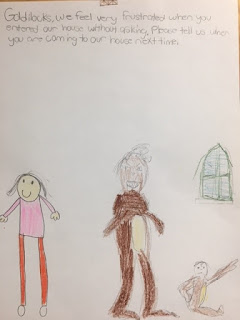Happy Monday! This blog focuses on the elements of a circle that keep it peaceful and organized. These components are extremely important in setting up a risk-free environment where discussions based out of trust can take place.
The center of the circle is used to focus the group and remind them to be present in the conversation. I like using a circular rug in the middle of my circles to help my students stay in a circle instead of a "squircle" (square circle :)). I actually found these two towels on Jane.com for about $9 each.
Some other teachers at my school went on Amazon.com and found their own circle rugs.
And one of our Kinder teachers uses something like this and calls it Purple Circle Time. So catchy and fun!
You can decorate the center of the circle in any way you want. These are some images I found online...


I like to take a more student-centered approach by having students choose the items...
Check out this video of a student explaining her selections to the group...
The guidelines are basic rules to keep peace and order in the circle. This is the copy that most people use and you can find it by Google searching "circle guidelines".
I love the idea behind these guidelines but wanted to simplify this for our Kinder-2nd students, so I created this poster...
I really like the guidelines as a starting point for creating agreements on respect and appropriate behaviors, because it really covers so much with just a few words.
If you saw this video...
Then you can see why students think the Talking Piece is so important. It really keeps order within the circle. You can use anything as a talking piece. Last year, Kimmie and I let each of her students choose a ribbon to represent them and then tied it on a stick they found outside...
I know, the stick kind of looks like a hot mess, but they really loved it!
I have also used all of these items as the talking piece...
Circles can start in many different ways (short stories, quotes, proverbs, anecdotes, etc.), but I like to start off by posing a question. Because my time is limited, I usually skip the fun/silly questions and jump right into something that connects with my lesson that week. The questions are usually pretty broad, but they allow for creativity and thought in the student's responses. I know it is often difficult to think of questions that are interesting and yet fun to answer, so I created a resource to help my staff come up with some good questions for starting circles. There are 9 categories and it includes 180 questions. Each category has a list of the questions but also has a set of matching question cards that can be put on a flip ring and used all year long.






































